In this post you’ll learn all about pink eye in cattle, how to recognize it, how to treat it naturally and how to hopefully prevent it from occurring in the first place. We share the full story below of how we went from very distraught about the potential damage to our entire herd to thinking about pink eye holistically.
This summer Mint Leaf joined our herd temporarily – our goal is to train her be a family milk cow before she goes on to her new home after calving next year. When she arrived she was mostly unhandled, and ran the other way whenever we came too close for her comfort. Whew!
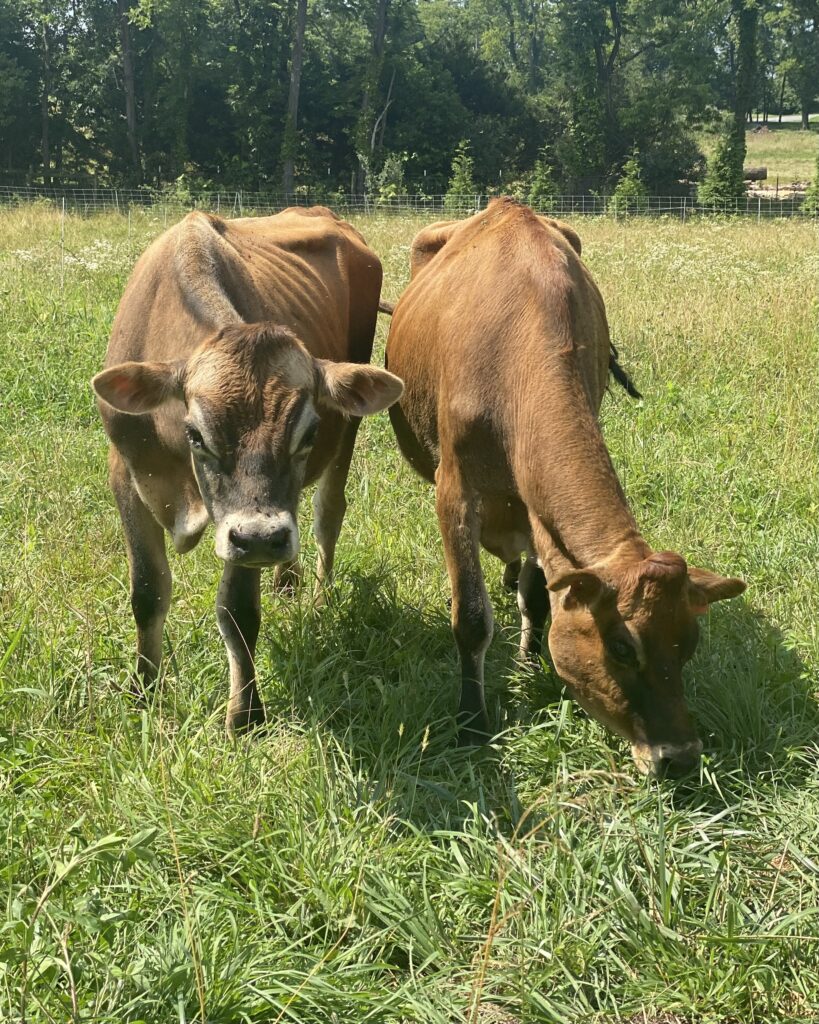
After Mint Leaf’s arrival we realized something was going on with her eyes – we saw white spots near the center of each of her eyes. We reached out to her previous owner and learned that those were scars from a her having pink eye previously. But over the next couple days we saw one spot seemed to be getting bigger and her whole right eye was turning cloudy looking. We gathered and prepared natural remedies for pink eye (more details on those in a bit) and began to attempt to treat her eyes.
If you search the web for information on pink eye in cattle, you’ll discover that it is reported to be caused by a bacteria that is easily transferred from cow to cow by flies that congregate around the cows’ eyes. You’ll also likely be met with an overwhelming number of pages that say it is highly contagious and can lead to blindness!
We contacted our vet to ask her opinion, and she said besides the cloudiness to the eye to look for watery discharge and squinting in the sun to help determine if it was an active infection. We never saw her squint in the sun, so maybe our treatment stopped it from reaching that stage!
For several days we kept a close watch on all of our other cows’ eyes, worried that we may have a herd outbreak. Thankfully none of the other cows developed any noticeable symptoms other than a slightly watery eye here and there. This experience was another powerful example to us of how “terrain” is more important than the mere presence of “germs.”
What do I mean by that? We figured out that the reason Mint Leaf developed this infection while none of our cows did is likely because our cows are given free choice minerals, specifically kelp and the iodine it contains protect against pink eye infection even in the presence of the bacteria that causes the infection. (During the first few days that Mint Leaf and her calf were here they went through an entire salt mineral block between the two of them – pointing to a definite need for more minerals in their bodies!)

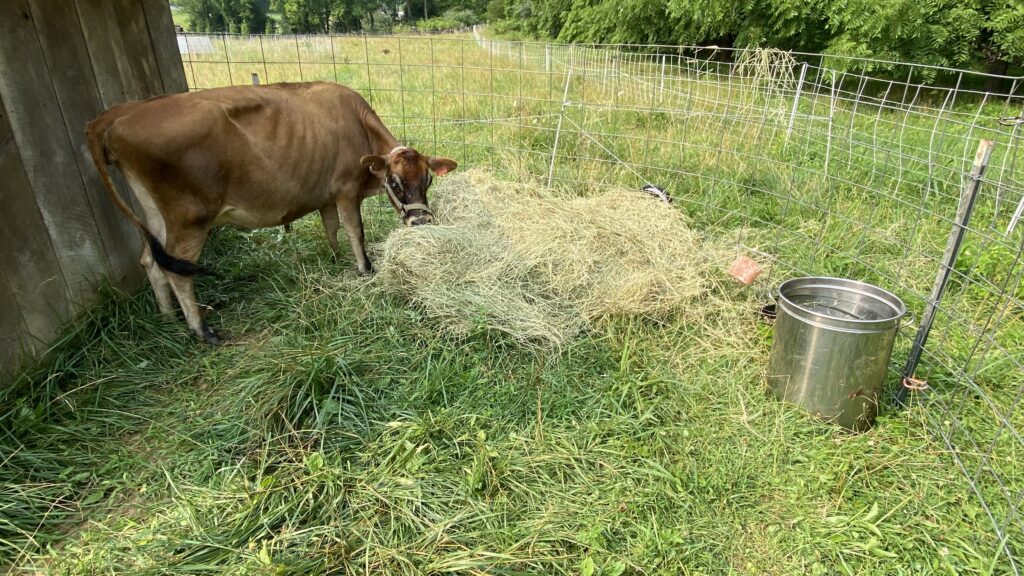
At first we were not able to adequately treat Mint Leaf’s eyes with her being so skittish of us – we snuck in a few sprays as she ate a treat (molasses and alfalfa) but she was on to us quickly and would not let us get close enough to help her after a few treatments. We knew we needed a better plan ASAP so we set up a small corral with cattle panels adjacent to the cows’ current paddock in their rotational grazing. Then we let our cows lead the way in, with Mint Leaf following closely behind – they are herd animals and we took advantage of this! Once everyone was in the corral we led our cows back out and Mint Leaf was contained. So simple and no stress.
We started drenching Mint Leaf’s eyes at least twice a day with a recipe we made from essential oils, an eye bright tincture and colloidal silver. We switched from a spray bottle to a squirt bottle so we could more thoroughly drench her eyes. One person held her head close to their body while the other held her eye open and saturated it with the mixture. Cows can squeeze their eyes very tightly shut so you have to be very firm! We also gave her kelp, Vitamin A (which can become depleted during infection), selenium, Redmond salt and a daily dose of the immune supporting recipe we use for cattle (all of the details of these natural remedies are in our Holistic Homestead Course). Mint Leaf happily gulped down all the vitamins and minerals we provided her and I refilled them multiple times per day to help her body heal.
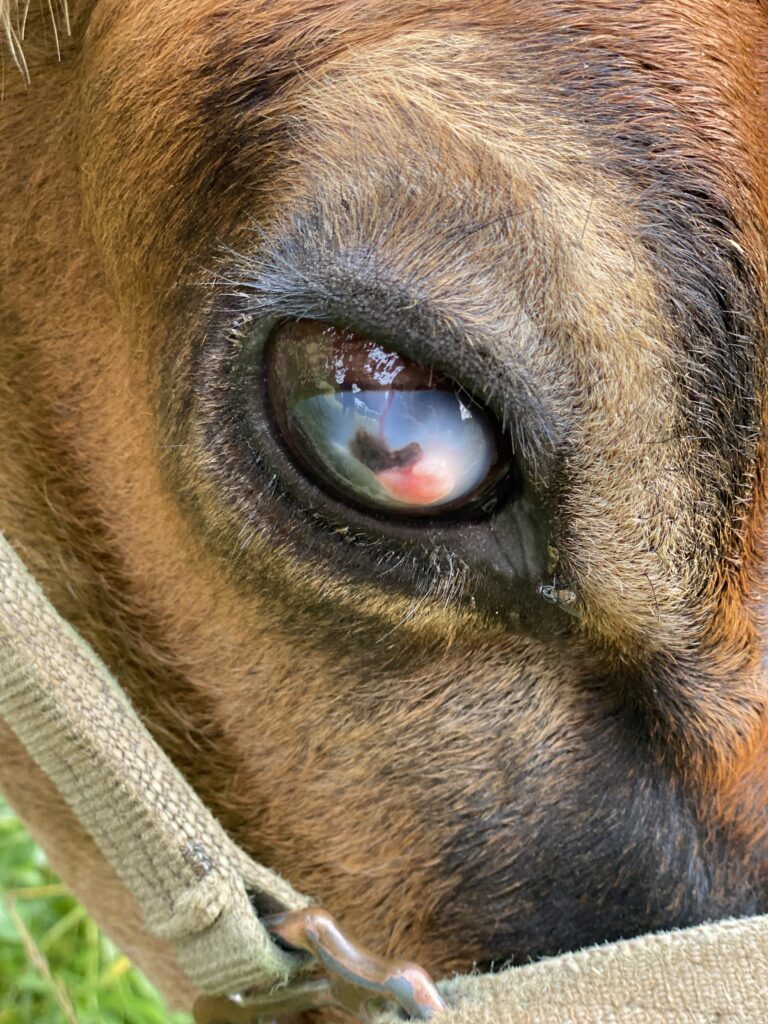
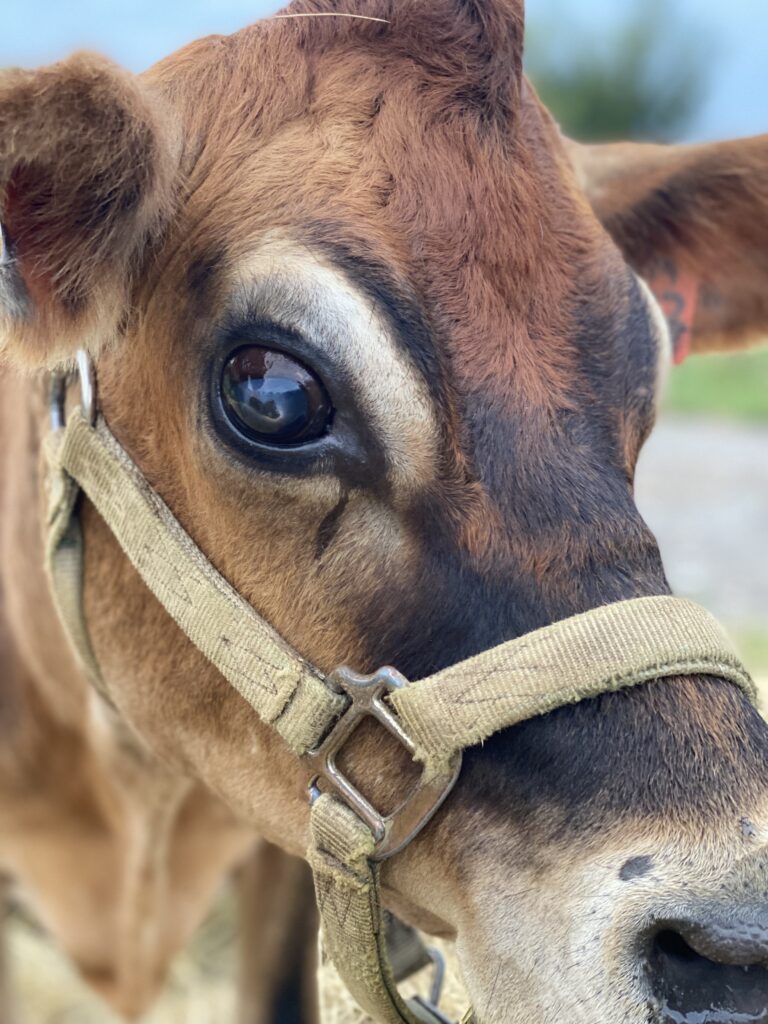
When our vet came out to look over Mint Leaf, we learned that pink eye starts out all over the eye, and then as the healing process begins the body concentrates the infection into the pink area you see in the photo above.
The pink area gets smaller and smaller until it’s cleared up and it can take a month or more for the pink to disappear. This area of concentration often protrudes from the surface of the eye and will likely have white scar tissue long term from the pressure there. Usually the cow will be able to see well enough but may have some areas of dark or lost vision.
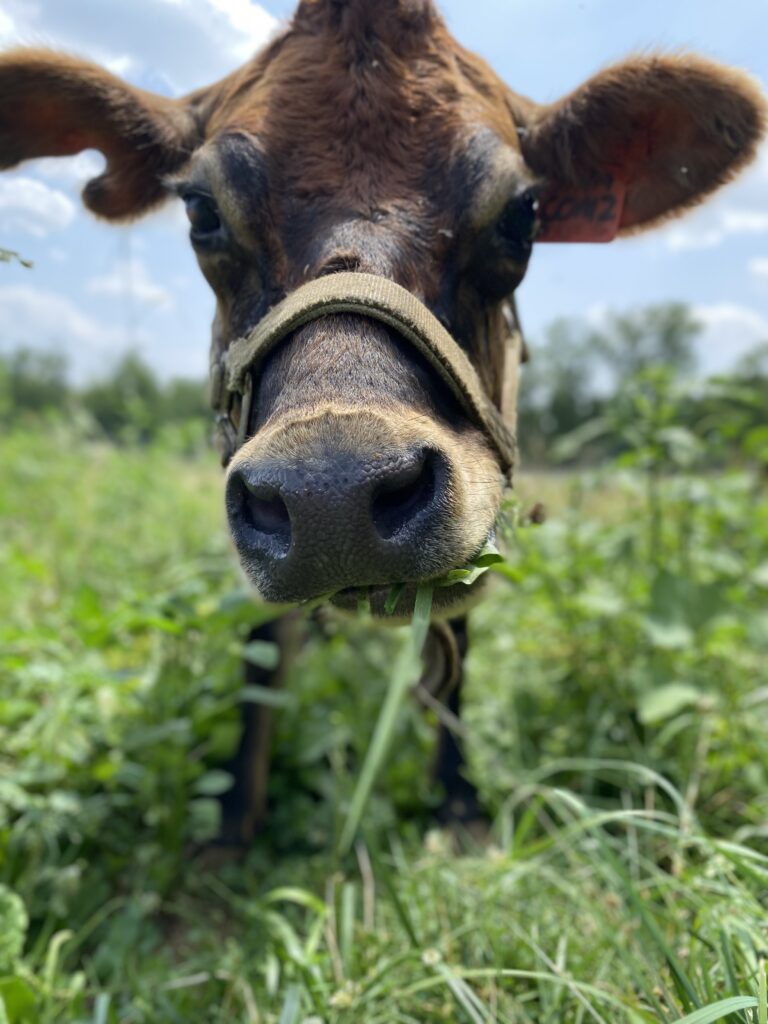
Despite Mint Leaf really disliking her eyes being treated, we were able to take advantage of the time we had her corralled to get a halter on her, brush her all over (cows LOVE brushing) and we each brought her handfuls of her favorite plants from the pasture every day (along with the hay she had in the corral) so that she learned to eat out of our hands and not fear us.
We put Mint Leaf back on pasture as soon as she was friendly enough for us to catch her and continue treating her eyes. Now we can walk up to her and give her scratches almost as easily as all of our other cows!


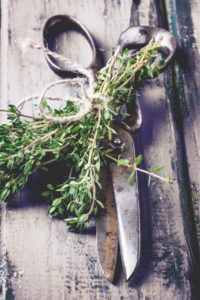







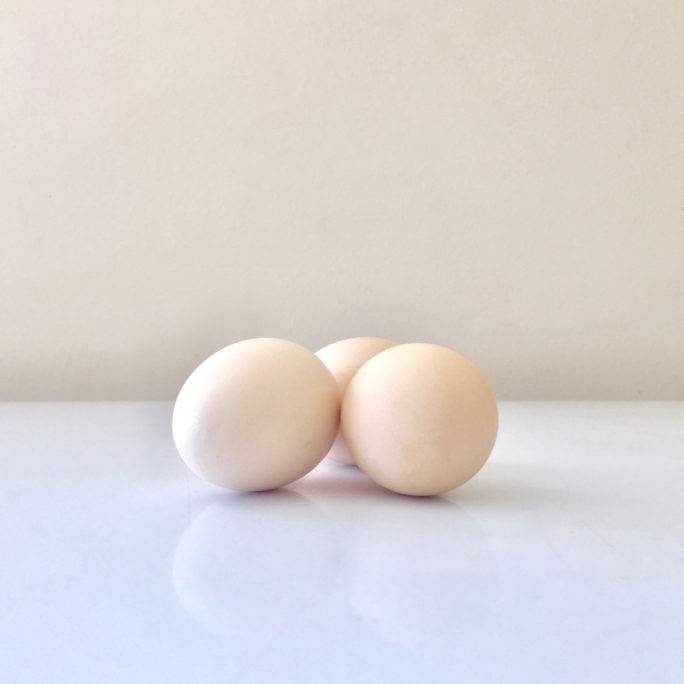

Thank you for sharing your experience. We have been fortunate to not have experienced this on our farm. However, I have seen this when I worked on a dairy.
I always appreciate your posts. Learning to treat animals naturally has been very important to me.